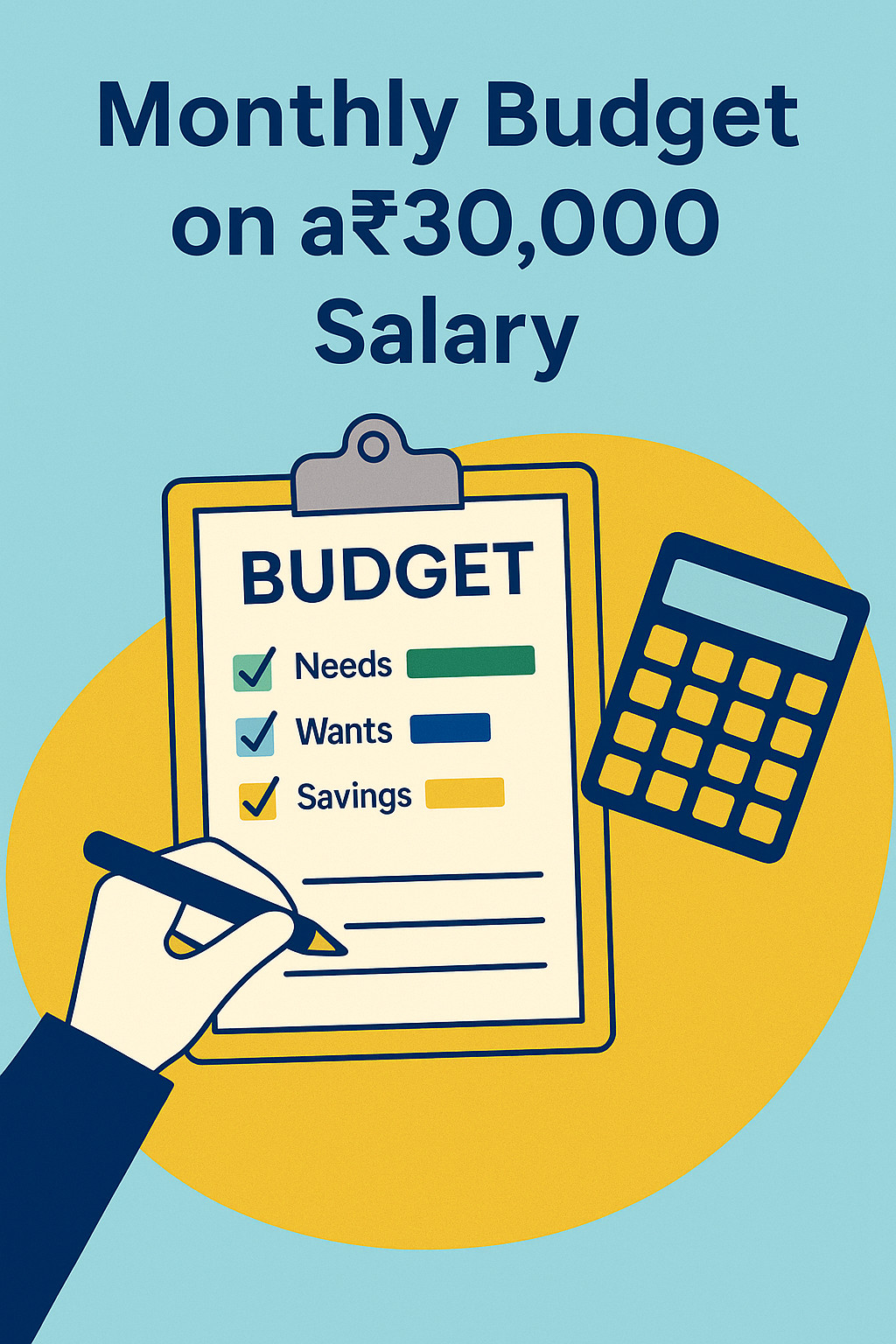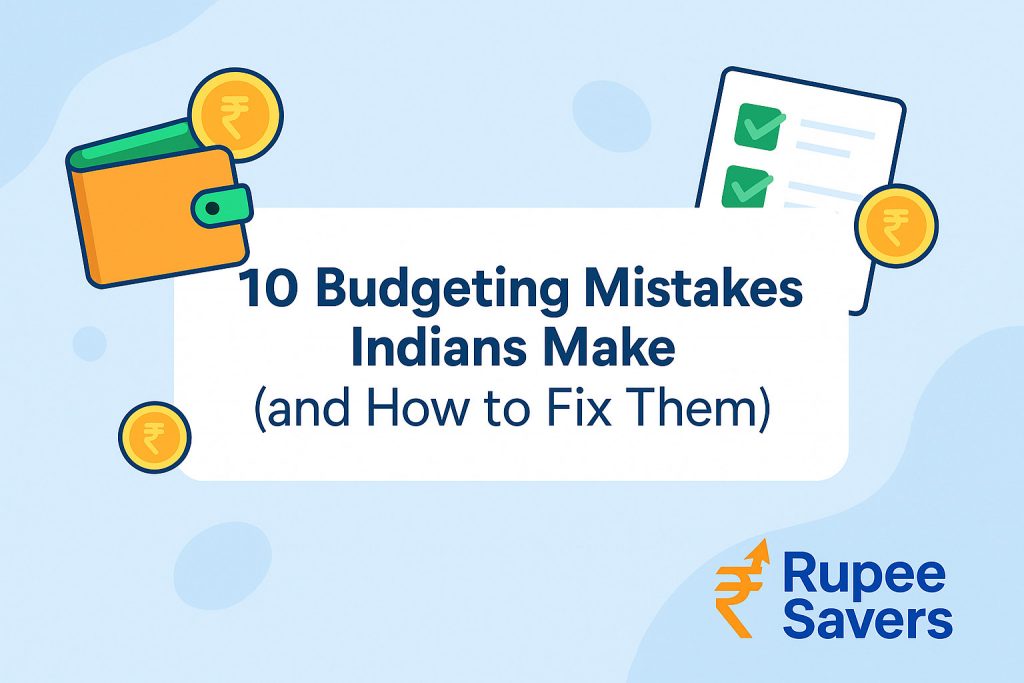Managing your salary smartly is the first step toward financial freedom. Whether you earn ₹20,000 or ₹2,00,000 a month, having a structured salary-based budget plan is essential. In this guide, we’ll show you exactly how to create a salary-based budget plan in India that actually works for any income level.
💰 Step 1: Know Your Exact Take-Home Salary
Start with your actual monthly income after tax deductions, EPF, and other cuts. Budgeting with gross salary will only create a gap later and lead to overspending.
Tip: Include any bonuses, incentives, freelance income, or side hustles only if they are regular and predictable.
Example: If your CTC is ₹8 lakh per year, your take-home after deductions might be closer to ₹55,000/month. Always plan with the real number.
🧲 Step 2: Categorise Your Expenses
Divide your spending into clear categories:
- Fixed expenses: Rent, EMIs, insurance premiums.
- Variable expenses: Groceries, utilities, transportation.
- Discretionary expenses: Shopping, dining out, entertainment.
Pro Tip: Analyse your last 2–3 months’ bank statements or credit card bills to find actual numbers. You’ll often be surprised by how much you’re spending unknowingly.
Bonus Tip: Track cash withdrawals separately—many small cash expenses go unrecorded.
🌐 Step 3: Follow the 50/30/20 Rule (with Indian Tweaks)
A good starting point is the 50/30/20 rule:
- 50% → Essentials (rent, groceries, bills, transport)
- 30% → Lifestyle choices (dining, gadgets, vacations)
- 20% → Financial goals (savings, investments, debt repayment)
Reality Check for Indians:
In metro cities like Mumbai or Bangalore, rent alone might consume 30-40% of your salary. Adjust your budget accordingly but never compromise on the savings target.
Indian Adaptation:
- Essentials: 50-60%
- Lifestyle: 20-25%
- Savings: 20-30%
Focus first on ensuring a minimum 20% savings, even if you need to tweak the other two.
📆 Step 4: Plan for Irregular and Seasonal Expenses
Don’t forget big but less frequent costs such as:
- Annual insurance premiums
- Festival shopping (Diwali, Rakhi, Pongal)
- School fees, memberships, subscriptions
- Car servicing, house maintenance
Solution: Create a “Sinking Fund.”
How to do it:
- Estimate your total annual irregular expenses.
- Divide by 12.
- Save that amount every month into a separate savings account.
Example:
If you spend around ₹24,000 yearly on festivals and insurance, save ₹2,000/month.
📘 Step 5: Automate Your Savings and Investments
Golden Rule: Pay yourself first!
The moment your salary hits your bank account:
- Set up automatic SIPs (Systematic Investment Plans) for mutual funds.
- Contribute to PPF (Public Provident Fund) or NPS (National Pension Scheme).
- Park money into a Recurring Deposit if you prefer fixed returns.
Why automate?
- Saves time and energy.
- Reduces the temptation to spend before saving.
- Builds financial discipline naturally.
Tip: Start small but consistently. Even ₹2000/month SIP can grow big over the years.
📅 Step 6: Review and Adjust Monthly
Your salary, expenses, and priorities will keep changing. Reviewing your budget monthly ensures you stay aligned with your goals.
Monthly Review Checklist:
- Did any expenses increase?
- Did you get a salary hike?
- Are you meeting your savings goals?
- Any new financial goals to add?
Routine:
- Set a 15-minute “money review” appointment on the 1st or last day of every month.
- Use free tools like Google Sheets, Notion, or budgeting apps like Money View or Walnut.
📊 Example: Salary-Based Budget for Different Income Levels
For ₹40,000/Month Salary:
| Category | Amount | Notes |
|---|---|---|
| Essentials | ₹22,000 | Rent, groceries, bills |
| Lifestyle | ₹10,000 | Dining, subscriptions |
| Savings/Investments | ₹8,000 | SIPs, RD |
For ₹50,000/Month Salary:
| Category | Amount | Notes |
| Essentials | ₹25,000 | Rent, groceries, bills |
| Lifestyle | ₹15,000 | Shopping, outings |
| Savings/Investments | ₹10,000 | SIPs, NPS contributions |
The principle remains the same—only the numbers change!
🔗 Final Tips to Build a Bulletproof Budget
- Start simple: No need for complicated spreadsheets at first.
- Prioritise emergency fund: 3–6 months of expenses is non-negotiable.
- Stay flexible: Some months will be costlier than others—adjust, don’t panic.
- Celebrate wins: Hit your saving target? Treat yourself responsibly!
Action Step:
Start your salary-based budget today. Even a simple plan beats a perfect plan that never starts!



